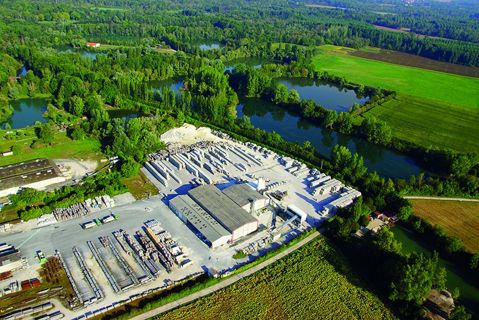
Low-carbon construction has changed the industry in many ways. Climate change is a global issue that has forced everyone to take action against activities that involve activities that produce carbon footprints. Construction is an industry that also has its role in increasing pollution, somehow. But things are changing with time, and people have been making more conscious efforts to prevent this. This article is a discussion on the low-carbon construction industry. Let’s first understand the concept of carbon footprint or low-carbon footprint.
Carbon Footprint:
Carbon footprint is the carbon dioxide or some other greenhouse gas going into the environment due to something that humans are doing. So in order to reduce this, humans are making an effort to watch their activities. As the temperature of Earth is becoming extreme due to these activities.
In construction, we can mention cement to explain the carbon footprint. So basically it is made from a procedure where limestone is heated at high temperature. Which, as a result, releases carbon dioxide. And the amount of cement that is used in the entire construction process is pretty much. Note that cement is not the only thing; it is just one thing that is adding to the misery of the earth. There are various construction materials that are causing the release of harmful gases into the air. Here is a list:
Cement production
Steel manufacturing
Use of heavy machinery
Brickmaking
Asphalt making
Low-Carbon Construction:
Low-carbon in construction means using methods that can reduce the overall emission of gases in the air. The working mechanism has changed for every field since people have realized that the carbon footprint is becoming a problem. Research is being done, and new materials and methods are discovered to achieve the same results but in a way that is less damaging to the atmosphere.
You can use recyclable materials; for example, concrete can be used as aggregate for roads.
Government regulations have forced people to make their buildings meet standards set for this purpose.
People can use energy-efficient materials, so overall energy needs are reduced.
People often hire experts from a cost estimating company for costing. But if you want to get the maximum out of them, you can discuss with them your issue regarding carbon emissions. They will design the project in a way that deals with your issues regarding its carbon emissions. They can still keep it within the budget of the client. For example, they can suggest that you use a certain type of cement that has a low carbon footprint. But the right to make the final choice belongs to the client or contractor.
Benefits of Low-Carbon Construction:
Operational Cost:
Energy-efficient designs reduce the overall requirement of energy. This indirectly reduces the pollution because the energy is coming from a process that releases harmful gases into the air.
Project Reputation:
From a contractor point of view, it improves their profile if they use sustainable practices in their projects. As people are following this as a trend, the contractor might get noticed for that.
Property Value:
The demand for such buildings has become high for two reasons. Energy efficiency attracts buyers because no one wants a house whose utility bills are touching the skies. And the second reason is that it is a new trend that is attracting many.
Real-World Applications:
Many construction companies are using recycled steel, glass, and other materials from demolished sites.
Low-carbon concrete is also a result of research in this field.
Energy efficiency was taken seriously because people did not want to pay large energy bills. But now the environment has also become a reason.
Materials are bought from local sellers to reduce pollution caused by transportation.
Construction material takeoff services help you estimate the exact amount of material required. This helps reduce wastage of material on the site. Waste material could have been used by someone else in their project. If everyone starts wasting material like that, then to respond to the demand, more material will be manufactured, which will increase carbon in the environment.
Conclusion:
Low-carbon construction is not an alternative to anything or any activity, but it is a need. Need in context that construction cannot be avoided and carbon footprint cannot be excluded from the picture. But what can be done is to reduce the carbon footprint. Although this practice is not followed by all, efforts are being made to make this a compulsion for all. It starts with the homeowner; they should make conscious efforts while they are planning their project. Then they can get help from the contractor and the estimating services to guide them on how to achieve this goal.
Follow Universe Estimating to stay updated on their latest posts!
0 comments
Be the first to comment!
This post is waiting for your feedback.
Share your thoughts and join the conversation.
